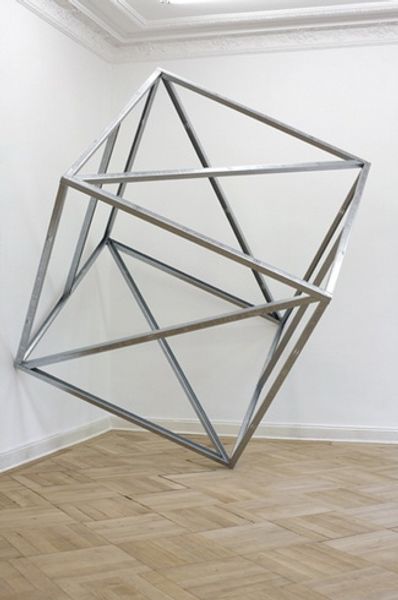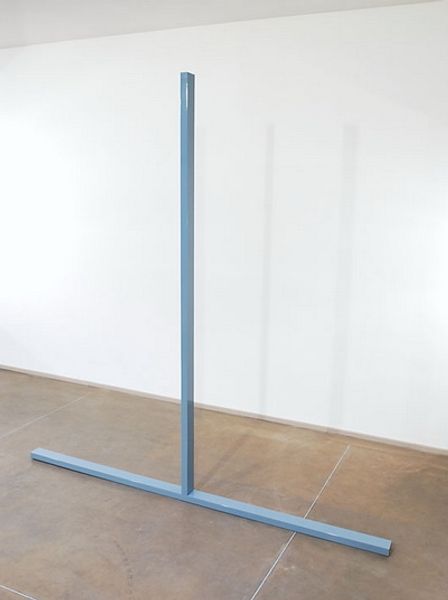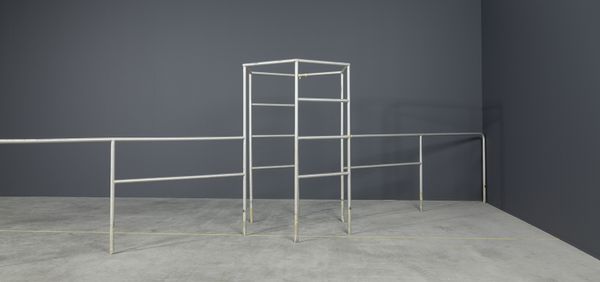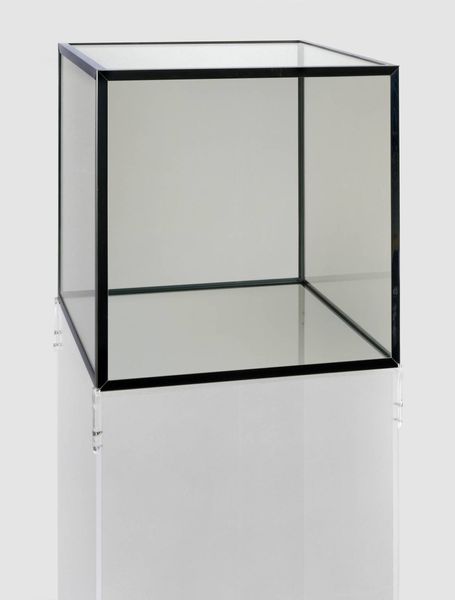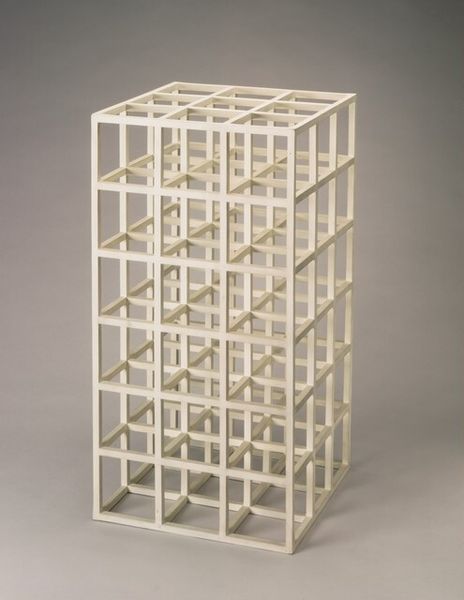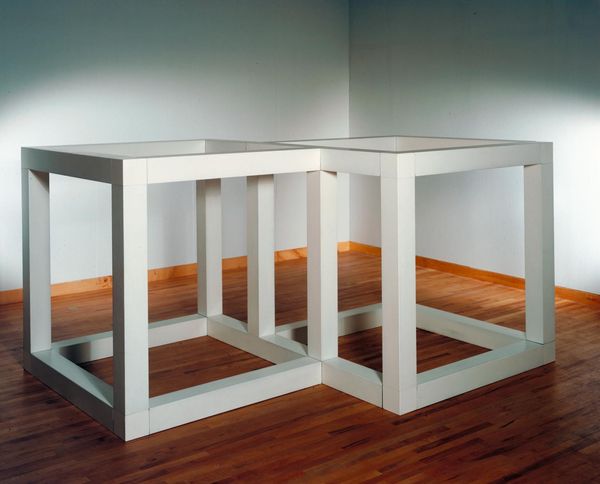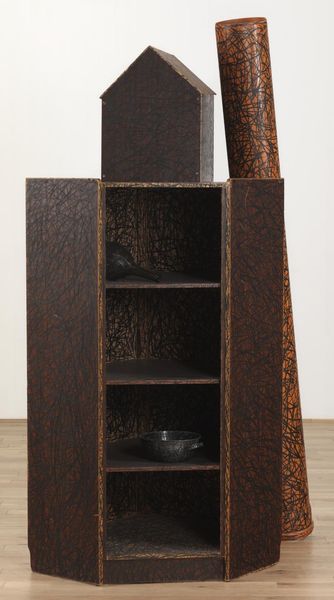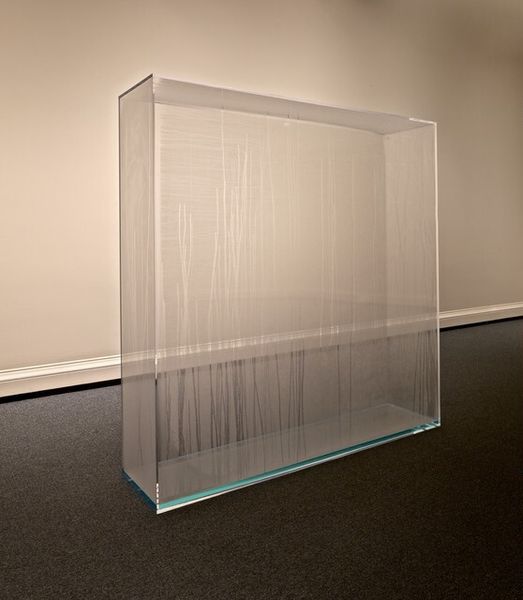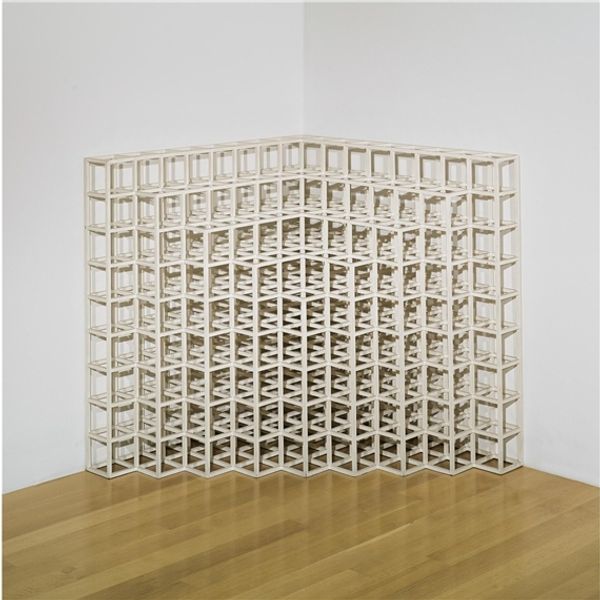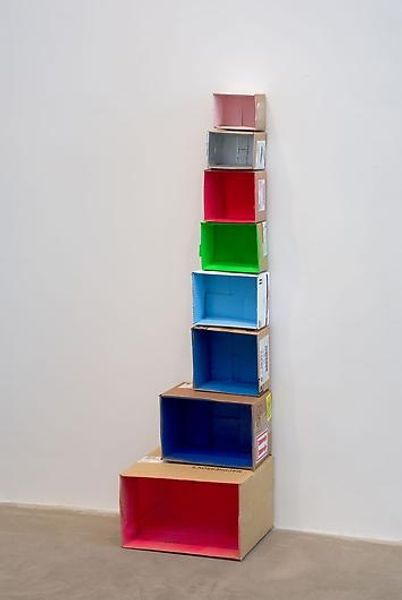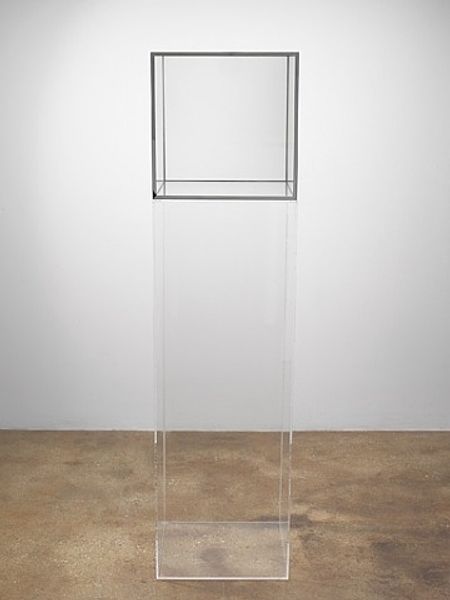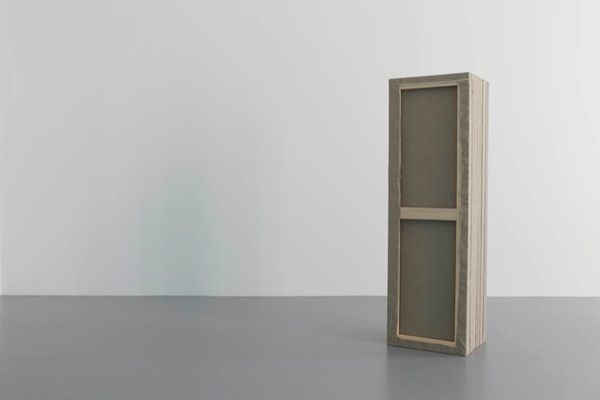
Dimensions: object, each: 2100 x 1200 x 400 mm
Copyright: © Michaelangelo Pistoletto | CC-BY-NC-ND 4.0 DEED, Photo: Tate
Editor: This is Michelangelo Pistoletto's "Bookcase" from the Tate Collections. I’m struck by the geometry of it. The angular frame seems almost like a deconstructed hourglass. What design principles do you think are at play here? Curator: Observe how the converging lines challenge our perception of stability. The object's functionality is almost secondary to its form. Consider the artist’s use of negative space. How does the artist’s choice to leave the shelves exposed affect the object's role and purpose? Editor: It becomes less about storage and more about visual interaction, I think. The emphasis is clearly on the shape itself. Curator: Precisely. It encourages us to reconsider the inherent qualities of everyday objects, prompting a deeper understanding of form versus function. This work invites us to reflect on the very essence of structure and design.
Comments
Join the conversation
Join millions of artists and users on Artera today and experience the ultimate creative platform.
tate 8 months ago
⋮
Bookcase is one of two identical, free-standing sculptures with the same title by Pistoletto in Tate’s collection (T12190–1). Each comprises a floor-standing iron framework supporting five evenly spaced shelves. Together the framework and the shelves form a single unit that takes the shape of a huge, upturned bow. Thus the unit is widest at the top and bottom (the upper and lowest shelves measure 120cm), and narrowest at the centre (the middle shelf measures just over 60cm). It is coated with blue-green metallic enamel paint. T12190 and T12191 are designed to be displayed next to one another against a wall, or at right angles to one another in a corner.


